Last Updated on by Mitch Rezman
Comparative Physiology: Human and Bird
The human body uses food and liquids for energy, growth, maintenance and repair. Before it can use food and liquids for these purposes, it must go through a process called digestion, which is carried out by the digestive system. The digestive system consists of the following organs: Mouth, salivary glands, oesophagus, liver, gall bladder, pancreas, stomach, large and small intestines, duodenum, rectum and the anus.

The process of digestion begins when a bite of food is taken. The teeth are then used to chew the food breaking it down into smaller and softer pieces. The food is also lubricated at this stage in the process by saliva produced in the salivary glands. Then, when the food is ready to be swallowed, a flap called the epiglottis blocks off the entrance to the windpipe, the soft palate rises to stop food entering the nasal cavity, and the food passes down the oesophagus, in a series of peristaltic waves, until it reaches the stomach, ready for the next stage of digestion.
The mouth of birds is distinctly different from humans. They have no teeth and their jaws are covered by a beak, which is in different forms depending on the bird. Birds, unlike humans, do not masticate or chew their food, as this is accomplished by the gizzard. The oesophagus of birds is large in diameter. Swallowing is accomplished
the same as humans, that is by peristaltic waves, which is in most birds aided by the extension of the neck.
bird digestion tutorial (raptor not parrot)
you haven’t lived until a Falcon pellets your lap
A human stomach is approximately 25 cm long. It is a J-shaped bag with strong, muscular walls which can stretch. These muscular walls contract and relax, churning the food up and making sure it is mixed very thoroughly with gastric juices. These gastric juices contain hydrochloric acid and enzymes, which, along with the churning of the stomach, eventually turn the food into a liquid called chyme. When this process has taken place, the chyme is pushed into the first part of the small intestine, the duodenum, ready for the next stage of digestion.
The human duodenum is a horseshoe shape organ, approximately 20 cm long. The purpose of the duodenum is to change the chyme into substances the body can use, with the help of different enzymes. It also neutralizes the acidic chyme making it safe to travel through the rest of the digestive system. Other organs which work with the
duodenum are the pancreas and the gall bladder. The pancreas forms the enzymes used by the duodenum, and insulin which is released straight into the bloodstream and taken to the liver. The gall bladder forms bile, which is also used by the duodenum. Once the chime has passed through the duodenum it has began to pass through the small intestine. This is a long, narrow tube, and although it is between 4 and 6 metres
long, it is coiled and looped tightly so that it fits into the abdominal space. The process of digestion is more or less finished, but the nutrients have to get out of the digestive system and into the rest of the body. This process is called absorption, and it takes
place as the digested food passes through the small intestine. Because of this it has a rich blood supply, both to nourish the small intestine, and to carry away the nutrients which are absorbed. After the chyme has passed through the small intestine, all the nutrients the body needs have been absorbed, and there is just one more stage it has to pass through before being excreted, the large intestine.

Birds have a duodenum and stomach similar to humans, but they also have an extra organ at this stage in digestion, the gizzard. The gizzard is similar to the stomach, but it is disc shaped and very muscular. It is responsible for breaking down food. Because of this, it sometimes contains small stones to help grind the food. A cycle of contractions forces food back and forward between the stomach, gizzard and duodenum to help mix it with enzymes. The small intestine of birds is very similar to that of humans. It is responsible for absorbing nutrients, and does so with the aid of the same enzyme as in humans, produced, produced by the pancreas.
The human large intestine is also known as the colon. It is much shorter and fatter than the small intestine-about 1m long and 6cm in diameter. All the useful material in food is absorbed before it reaches the large intestine. Only waste material and water, containing dissolved mineral salts, is left. The main function of the large intestine is to remove the water and salts from the waste. It does this in the same way as the small intestine absorbs nutrients. Once the water and mineral salts have been removed, the waste material becomes more solid, eventually forming the brown waste material called
faeces. Faeces are stored in the rectum until they are excreted through the anus.
The large intestine of bird’s primary purpose is the same as in humans. The only difference is that short villi extend into the lumen. The cloaca is the cavity in birds where the intestinal and urinary ducts end, which opens to the outside of the bird as a vent.
The parts of an animal which obtain the vital supplies of oxygen from the surroundings are called the respiratory system. In humans, the system starts at the nasal cavity inside the nose. This is both the inlet and outlet for air. Beyond this is the passageway, down the throat, which consists of the larynx and the windpipe, or trachea. These carry air down into the chest. From here the windpipe splits into two airways, called the bronchi. These carry air in and out of two lungs, which sit protected inside the rib cage of the chest.
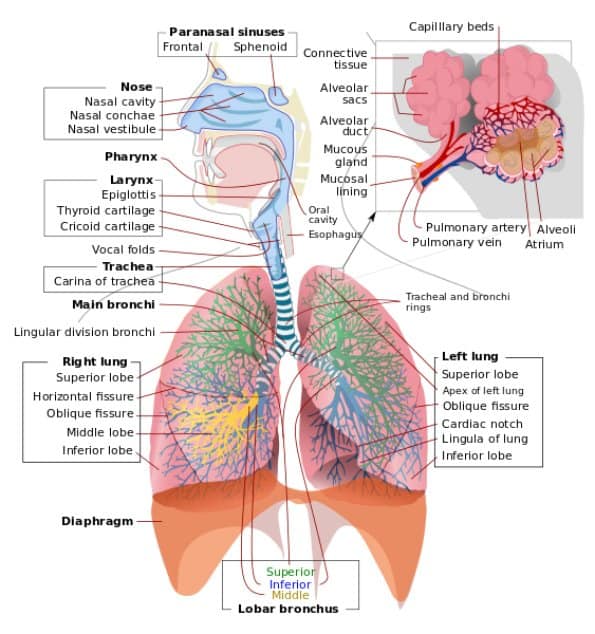
The Human Respiratory System
Birds have a respiratory system which is functionally comparable to humans, but the structure is quite different. Air enters through the nostrils or nares of the bird and move into the nasal cavity. The nasal cavity is divided into a right and left side by a nasal septum. The septum is composed of cartilage and bone. The air then moves down the trachea, which is very similar to that of humans. It then, like humans, splits into two bronchus, going in to one of two lungs.
In the human lungs, oxygen is removed from the air and passed into the blood; the waste gas carbon dioxide leaves the blood to be eliminated in exhaled air. The airways, going into the lungs, divide into finer and finer branches, or bronchioles; the narrowest bronchioles end in alveoli. These are tiny blind ended air sacs where most of the gas exchange between air and blood takes place. The total volume of air in a pair of filled lungs is more than six litres.
When you breathe in, muscles raise and expand the rib cage, while the diaphragm, a domed muscular sheet under the lungs, flattens. These movements increase the volume of the plearal cavity, the space in which the lungs sit, and air rushes in to equalize pressure. With the reverse movements, the volume decreases and air is pushed out.
It’s in the structure of the lung that birds differ greatly from humans. Birds lungs are very small compared to their body size, very stiff and do not become inflated. Birds also have eight air sacs (in most birds). These air sacs move air through the lungs, as they do not have a diaphragm. They do this by pressure changes in the air sacs. Many of these air sacs extend into bones. The whole structure of the respiratory system in birds is to aid them in flight. Their blood becomes oxygenated at a higher rate than humans. This helps them meet their high oxygen demand during flight. The air sacs also make the bird much lighter and make it easier to fly.
All living tissue has to be supplied with blood; it delivers nutrients and oxygen and takes away waste products. The system responsible for this is the circulatory system. This is a closed, tubular system of arteries, veins, capillaries and the heart.
To force blood through the vessels, the whole heart contracts, squeezing blood out of its internal chambers. Flap valves inside the heart mean that each side of the heart allows blood to move in only one direction. The heart is a double pump, with two pairs of pumping chambers, each having its own role. The right side pumps oxygen- depleted blood from the rest of the body to the lungs, where it gains a new oxygen supply. The blood then moves to the left of the heart, where it is pumped back out to the body. The four chambers of the heart, two atria and two ventricles, are built of cardiac muscle.
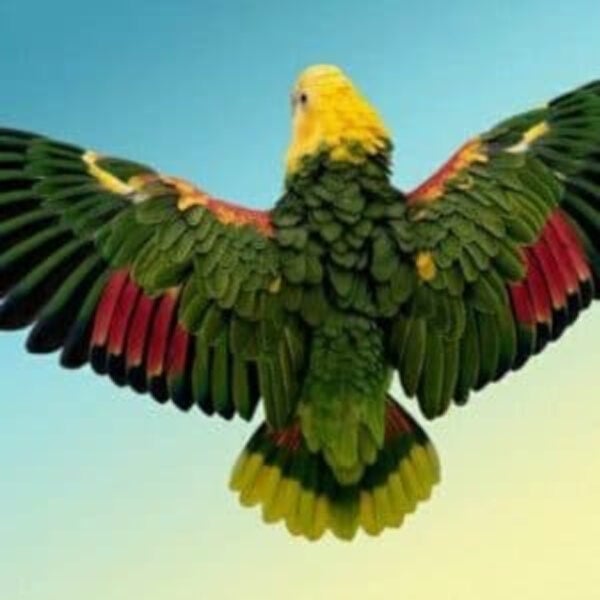
Double Yellow head Amazon
Blood circulates around the body, returning to its starting point again and again. In one complete tour of the system, blood goes in turn around each of the body’s two circulation tracks: from the heart, through the lungs and back to the heart; and from the heart to the rest of the body and back. In both tracks thick-walled arteries carry blood away from the heart, and thinner walled veins carry blood back again.
The circulatory system of birds is much like that of a human. It consists of a heart, arteries, veins and capillaries. Birds, like humans, have a 4 chambered heart (2 atria and 2 ventricles), which works in exactly the same way.
The differences between the circulatory system of birds, compared to humans, is the size of their heart. Relative to body size and mass, birds have much larger hearts than humans. The relatively large hearts of birds may be necessary to meet the high blood supply needed during flight. Hummingbirds have the largest hearts of all birds (relative to body size and mass), because of the large amounts of energy used when hovering.
Bird’s hearts also tend to pump more blood per unit time than human hearts. This is known as cardiac output, and is influenced by both heart rate (beats per minute) and stroke volume (blood pumped with each beat). The reason for this is again because of the large amounts of blood supply needed during flight.
“Comparative Physiology: Human and Bird.” 24 Feb 2013
Author Profile
Latest entries
 The Traveling BirdJune 26, 2025Can You Name 5 Parrot Species That Are Living Wild in the USA?
The Traveling BirdJune 26, 2025Can You Name 5 Parrot Species That Are Living Wild in the USA? Bird BehaviorJune 26, 2025How is it Parrots Are Problem Solvers Social Animals and Even Use Tools?
Bird BehaviorJune 26, 2025How is it Parrots Are Problem Solvers Social Animals and Even Use Tools? Bird & Parrot AnatomyJune 25, 2025How a Tiny Chemical Modification Makes Parrots Nature’s Living Paintings
Bird & Parrot AnatomyJune 25, 2025How a Tiny Chemical Modification Makes Parrots Nature’s Living Paintings PigeonsJune 20, 2025How Do Parrots Thrive in Cities Outside Their Native Habitats?
PigeonsJune 20, 2025How Do Parrots Thrive in Cities Outside Their Native Habitats?
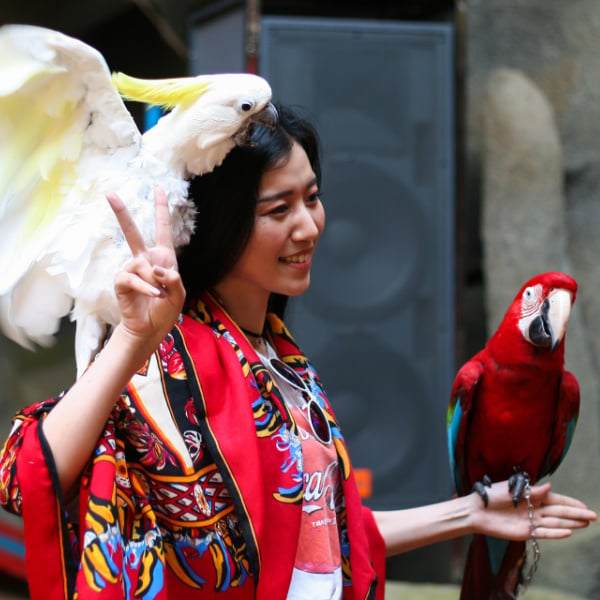
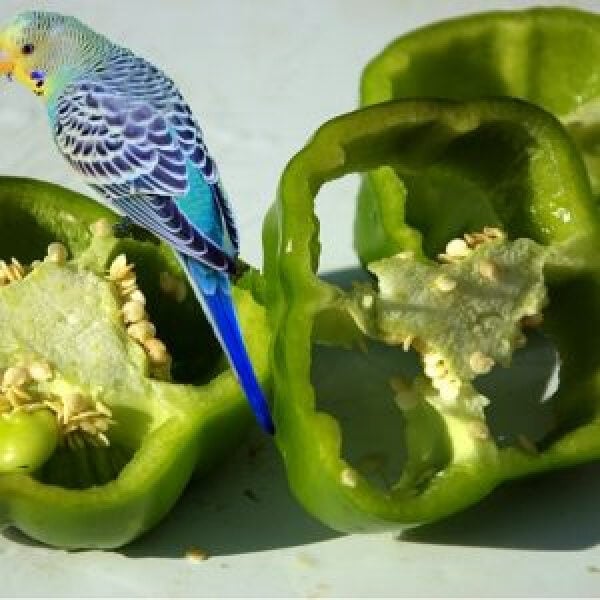

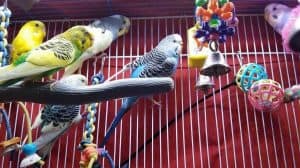

Baig007
19 Aug 2018Nice my friend, this is not clear and not right. Thanks for the stupid information! <3